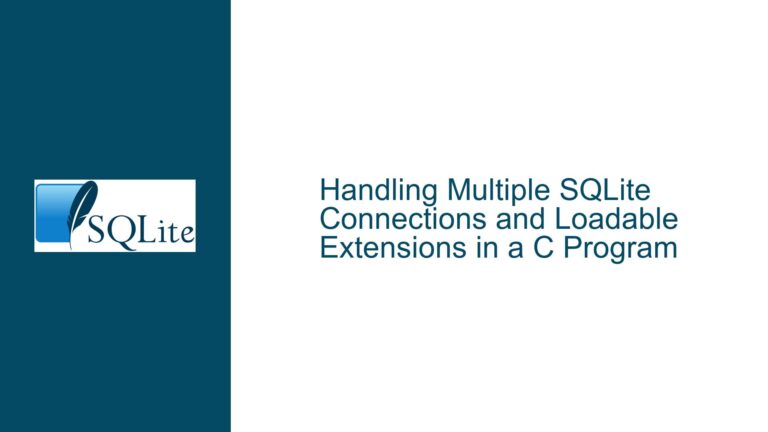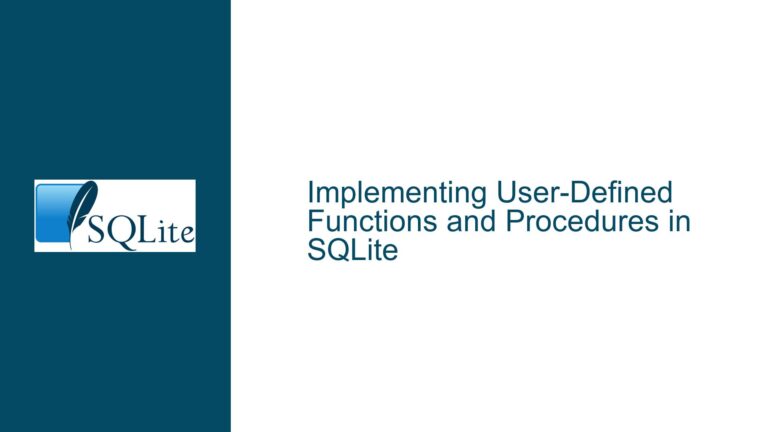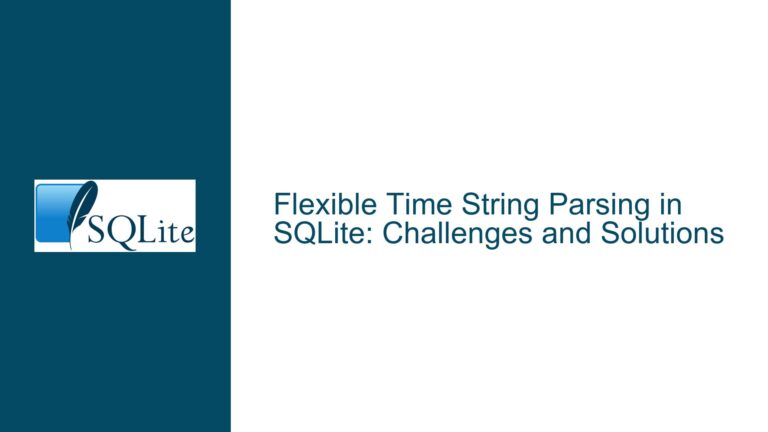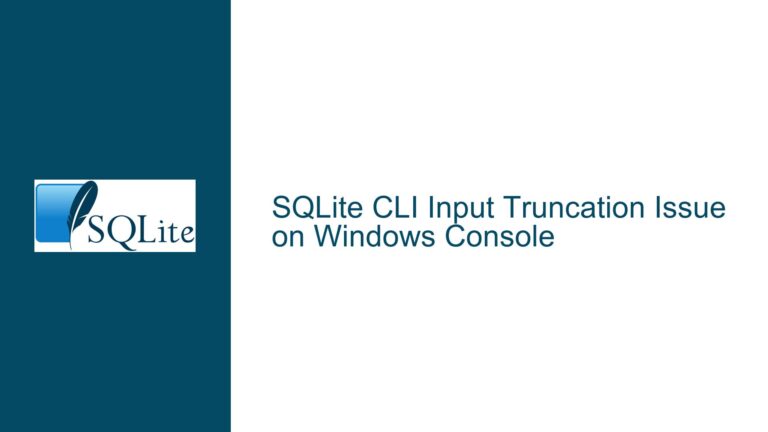SQLite Ptrmap Entries for Lock-Byte Page and Beyond
Issue Overview: Ptrmap Entries and Their Behavior in SQLite
The SQLite database engine employs a sophisticated mechanism known as the pointer map (ptrmap) to manage the relationships between pages within the database file. The ptrmap is a critical component of SQLite’s internal architecture, particularly for ensuring data integrity during operations like auto-vacuuming and incremental vacuuming. Each ptrmap entry describes the relationship between a parent page and its child pages, and it contains a type field that indicates the nature of this relationship.
The core issue revolves around the behavior of ptrmap entries for two specific scenarios: the lock-byte page and pages that lie beyond the current end of the database file. Specifically, the questions raised are:
- Is the ptrmap entry for the lock-byte page guaranteed to have a type of 0?
- Are the ptrmap entries for pages beyond the current end of the database file guaranteed to have a type of 0?
To address these questions, it is essential to delve into the internals of SQLite’s ptrmap implementation, understand the role of the lock-byte page, and explore how SQLite handles pages that are beyond the current end of the database file.
Possible Causes: Why Ptrmap Entries Might Have Type 0
The ptrmap type field is a single byte that indicates the relationship between a parent page and its child pages. The type values are defined as follows:
- Type 0: The page is not used as a b-tree page or overflow page. This type is typically used for pages that are not part of the active database structure, such as free pages or pages that have not yet been allocated.
- Type 1: The page is a b-tree root page.
- Type 2: The page is a b-tree interior page.
- Type 3: The page is a b-tree leaf page.
- Type 4: The page is an overflow page.
Given this, the ptrmap entry for the lock-byte page and pages beyond the current end of the database file might have a type of 0 for the following reasons:
Lock-Byte Page: The lock-byte page is a special page in SQLite that is used to manage file locks. It is not part of the b-tree structure or overflow chain, and therefore, it does not have a parent-child relationship with other pages. As a result, its ptrmap entry is likely to have a type of 0, indicating that it is not used as a b-tree page or overflow page.
Pages Beyond the Current End of the Database File: Pages that lie beyond the current end of the database file are, by definition, not yet allocated. These pages do not contain any data and are not part of the active database structure. Consequently, their ptrmap entries are expected to have a type of 0, indicating that they are not used as b-tree pages or overflow pages.
However, these assumptions are based on the expected behavior of SQLite’s internal mechanisms. To confirm whether these assumptions hold true, it is necessary to examine the SQLite source code and documentation in detail.
Troubleshooting Steps, Solutions & Fixes: Confirming Ptrmap Entry Behavior
To confirm the behavior of ptrmap entries for the lock-byte page and pages beyond the current end of the database file, the following steps can be taken:
Review SQLite Source Code: The SQLite source code is the ultimate authority on the behavior of ptrmap entries. By examining the code responsible for creating and updating ptrmap entries, it is possible to determine whether the lock-byte page and unallocated pages are guaranteed to have a type of 0.
Lock-Byte Page: The lock-byte page is typically located at the beginning of the database file. The code responsible for initializing the ptrmap entries for this page should be reviewed to confirm that it sets the type field to 0.
Pages Beyond the Current End of the Database File: The code responsible for handling ptrmap entries for unallocated pages should be examined to verify that these entries are initialized with a type of 0.
Conduct Empirical Testing: In addition to reviewing the source code, empirical testing can be conducted to observe the behavior of ptrmap entries in real-world scenarios.
Lock-Byte Page: Create a new SQLite database and inspect the ptrmap entry for the lock-byte page using a tool like
sqlite3_analyzer. This tool can provide detailed information about the structure of the database file, including the ptrmap entries.Pages Beyond the Current End of the Database File: Extend the size of the database file by adding new data and observe the ptrmap entries for the newly allocated pages. Compare these entries to those of pages that lie beyond the current end of the file to confirm that the latter have a type of 0.
Consult SQLite Documentation: While the SQLite documentation may not explicitly address the behavior of ptrmap entries for the lock-byte page and unallocated pages, it may provide insights into the overall design and purpose of the ptrmap mechanism. This information can help to validate the assumptions made about the ptrmap entries.
Engage with the SQLite Community: If the source code review and empirical testing do not provide conclusive answers, engaging with the SQLite community through forums or mailing lists can be beneficial. Other developers and SQLite experts may have encountered similar issues and can provide additional insights or confirmations.
Implement Custom Debugging Tools: If necessary, custom debugging tools can be developed to inspect the ptrmap entries in greater detail. These tools can be used to log the ptrmap entries during database operations and analyze their behavior over time.
By following these steps, it is possible to confirm whether the ptrmap entries for the lock-byte page and pages beyond the current end of the database file are guaranteed to have a type of 0. This confirmation will provide a deeper understanding of SQLite’s internal mechanisms and ensure that database operations are performed with a high degree of confidence in the integrity of the data.
In conclusion, the behavior of ptrmap entries in SQLite is a nuanced topic that requires a thorough understanding of the database engine’s internals. By reviewing the source code, conducting empirical testing, consulting the documentation, engaging with the community, and implementing custom debugging tools, it is possible to confirm the expected behavior of ptrmap entries for the lock-byte page and pages beyond the current end of the database file. This knowledge is invaluable for database developers and administrators who seek to optimize and troubleshoot SQLite databases effectively.






